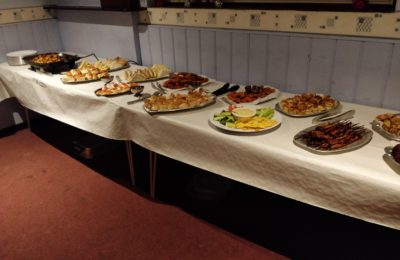 This from the May 1983 issue of club magazine Eureka. (Shown in part.)
This from the May 1983 issue of club magazine Eureka. (Shown in part.)
The history of the crotal bell.
“At first I thought the use of these bells had been to tie round the necks of sheep to enable the shepherd to find his flock in poor weather or to warn him if they were being harassed by predators. However, someone in the club corrected me – they were carried on horse harnesses to ward off evil spirits.
I decided to research further and referred to Encyclopaedia Britannica. The word crotal does not appear in the index, nor in other encyclopaedias. I checked my book on horse brasses by Peter Brears and found nothing in the index but lo and behold, there were two whole chapters devoted to bells on horse harnesses including crotal bells described as rumbler bells.
It appears that the earliest of crotal like design were of Roman origin and were hollow spheres of iron or bronze with a long rectangular slit cut diametrically through the lower half, the bell being sounded by an iron ball bounced around my the motion of the horse and often mounted on the crupper (on the rump near the tail root).
In the 16th century these bells were often made of precious metals and awarded as prizes at races. Anyone lucky enough to find one May have discovered an ancient race site. My book records that one of these nag bells, as they were known, was 4.5 inches in diameter and of solid silver was presented to the Corporation of Carlisle in 1599 by a Lady Dacre and carried a lengthy inscription.
A more mundane use of these bells was for pack horses so that, even in bad weather, the horses could keep together by following the sound of the lead horse’s bells. The book recounts an amusing tale of one particular pack lead by a salacious old black stallion which proceeded along their regular route without any attention from their master who called at every inn along the way leaving the horses to go on without him. He then overtook them, presumably after closing time, went on to the next inn and waited for them to catch up. This carried on to the end of the day when I suspect the master was incapable of recognising his own string.
Some horse owners opted for open mouth bells of the more conventional design and even arranged them in small belfries. These were much heavier and often mounted on the cart. The other advantage of this was that it reduced the annoyance to the horse caused by the constant ringing just behind their ears. The book recounts that some waggoners became obsessed with the bells and tried to outdo one another by mounting more and more bells until one loaded his harness with 320, the sound of which must have been deafening rather than annoying to the horses. I suppose the modern equivalent would be the motor scooter overloaded with lamps none of which work or serve any useful purpose.
The book goes on to explain the manufacturing process, but despite reading it several times, I still can’t understand it. It seems a very complicated business and one wonders how the bells were made so cheaply, for cheap they must have been for so many to have been produced.”






